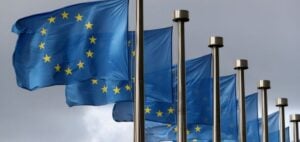At the United Nations Climate Change Conference, seven countries, including the USA and the Czech Republic, joined the Powering Past Coal Alliance (PPCA). This coalition aims to end electricity generation from unprocessed coal by 2030. The new members, which also include Cyprus, the Dominican Republic, Iceland, Kosovo and Norway, have pledged not to develop new untreated coal-fired power plants and to phase out existing installations.
The importance of US membership of the PPCA
The accession of the United States, as the world’s third largest coal consumer, represents a major victory for the PPCA. John Kerry, the US Presidential Special Envoy for Climate, emphasized the importance of this commitment: “To reach our goal of 100% carbon pollution-free electricity by 2035, we must eliminate untreated coal, and we urge the world to join us in this effort, while working to develop good clean energy jobs.”
The Role of Coal in Climate Change
Coal-fired power generation is the biggest single contributor to climate change. In 2020, the major economies emitted 7.8 billion metric tons of CO2 equivalent from this source alone. China and India, the world’s biggest coal consumers, are not part of the coalition. This absence raises questions about the overall effectiveness of the PPCA initiative without the participation of these key players.
The Worldwide Situation of Coal-Fired Power Generation
In 2022, coal-fired power plants generated 36% of the world’s electricity, outstripping all other sources. More than half of this production came from China, followed by India, the USA and Japan, which together accounted for around 25% of the total. China consumed 4.5 billion metric tons of coal, while India’s consumption reached almost 900 million metric tons.
The Challenges of Energy Transition
The IEA’s roadmap to carbon neutrality shows that coal use must cease in advanced economies by 2030, and worldwide by 2040. However, even in Europe, where several countries are phasing out coal, Germany and Poland are struggling to meet these targets. In addition, India and China continue to build new coal-fired power plants, posing a major challenge to global climate objectives.
The commitment by seven additional countries to phase out untreated coal by 2030 is a significant step forward in the fight against climate change. However, the absence of major coal consumers such as China and India from the PPCA alliance raises questions about the overall impact of these commitments.






















